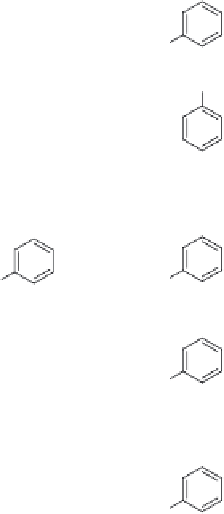Chemistry Reference
In-Depth Information
J-20
) were identified as having the potential to deliver improved potency over the lead com-
pound
3
. These candidates were then used as the basis for a traditional medicinal chemistry
investigation and optimization (Scheme 7.5). The overall outcome for this study was the
identification of four novel thiol compounds with
K
i
6-17 M, 10-30-fold more potent
than the lead compound
3
with a
K
i
of 185 M.
CO
2
H
HS
HITS
HS
F
CO
2
H
CO
2
H
CO
2
H
HS
S
S
HS
H-5
S
G
LEAD
in situ
DCC
(BcII + fragments
F-J
,
4-22
)
nanoESI-MS screening
CO
2
H
CO
2
H
CO
2
H
NH
2
SH
S
S
HS
H-8/9/10
HS
HS
H
3
CO
2
H
CO
2
H
K
i
s
=
185
m
M)
CO
2
H
S
HS
S
HS
SH
J-20
I
CO
2
H
HS
SH
traditional medicinal chemistry
(gave four inhibitors with
K
i
s of 6-17
J
m
M)
DCC anchor fragments
Scheme 7.5
DCC enzyme inhibitor discovery and optimization protocol
targeting
metallo-
β
-lactamase.
Both of the above examples demonstrate that there is enormous scope for ESI-MS as a
direct and primary screening tool for the identification of small molecules formed by DCC
in the presence of a biomolecular target. The ESI-MS screening has permitted concurrent
identification of all ligands of interest through direct analysis. The approach distinguished
the effective (from ineffective) combination of building blocks in the DCL by specific
detection of the target protein-ligand noncovalent complexes and in both examples novel
ligands were identified with improved enzyme inhibition properties compared with the
lead fragments. When using the FTMS technique, it is reasonable to expect that increased
DCL size need not increase the complexity of this screening protocol, owing to the sensit-
ivity, high resolution and MS-MS capabilities, which should avoid the need for multiple
sublibraries for deconvolution of larger DCLs.
















